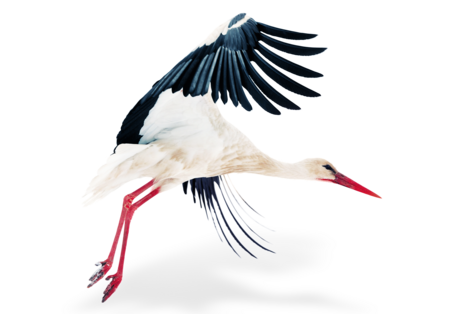White Stork
Ciconia ciconia
![[Translate to English:] [Translate to English:] Zwei Weissstörche.](/fileadmin/_processed_/d/1/csm_weissstorch-hellabrunn-welt-der-voegel-tierpark_b2abf2d13d.jpg)
- FamilyStorks (Ciconiidae)
- Weight2 – 4 kg
- HabitatArable landscapes with wetlands, shallow waters, pastures and meadows
A different kind of loyalty
The males are usually the first to return to the breeding range. They head back to their old nest, also known as an eyrie. The females fly home a little later – also to their former eyrie. For both sexes, the eyrie is more important than the partner. So they are loyal to the eyrie. An eyrie is typically built in a high, inaccessible place that offers protection from predators and a good view of the surrounding foraging area.
Southward journey and back again
White storks are long-distance migrants: every autumn they fly to Africa to spend the winter there. In spring they return to Europe for the breeding season. To avoid crossing over the Mediterranean, the storks follow one of two migration routes: the eastern route along the Turkish coast or the western route via Gibraltar. The route taken depends on where in Europe their migration begins.

In the late 1980s, there were only 58 breeding pairs left in Bavaria. Now thanks to local and global conservation measures, over 1,000 pairs were recorded in 2022.
Distribution
